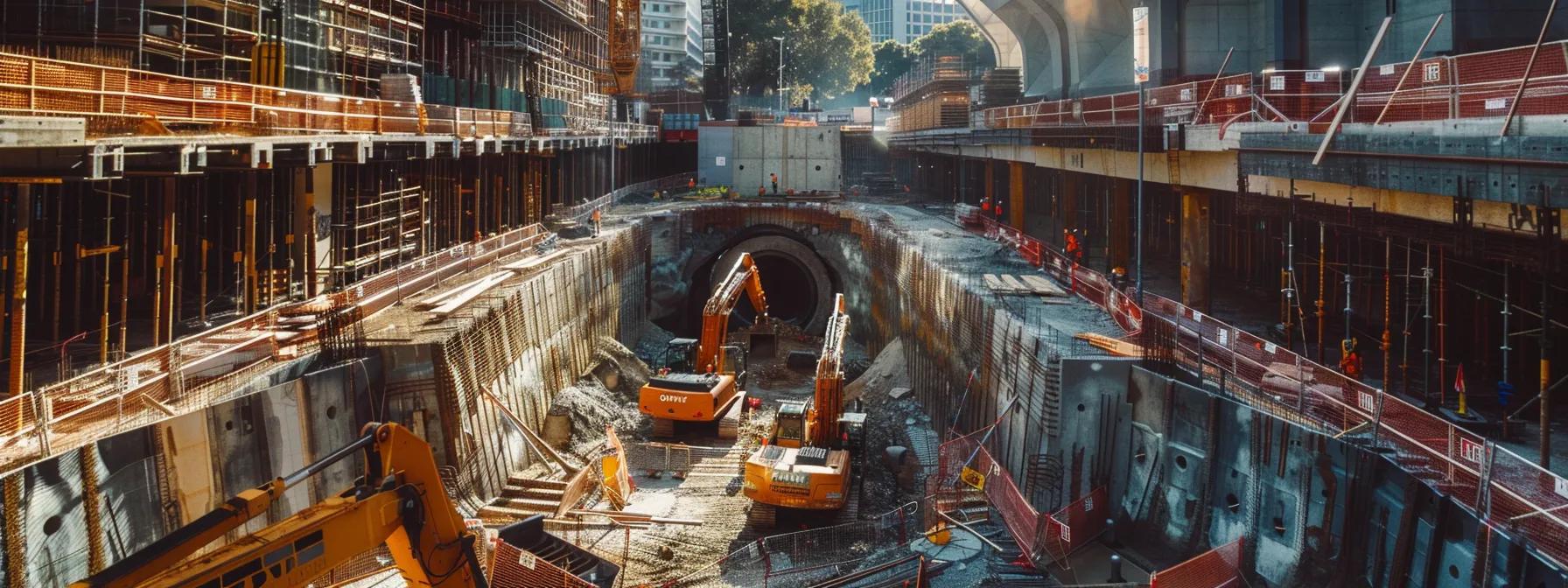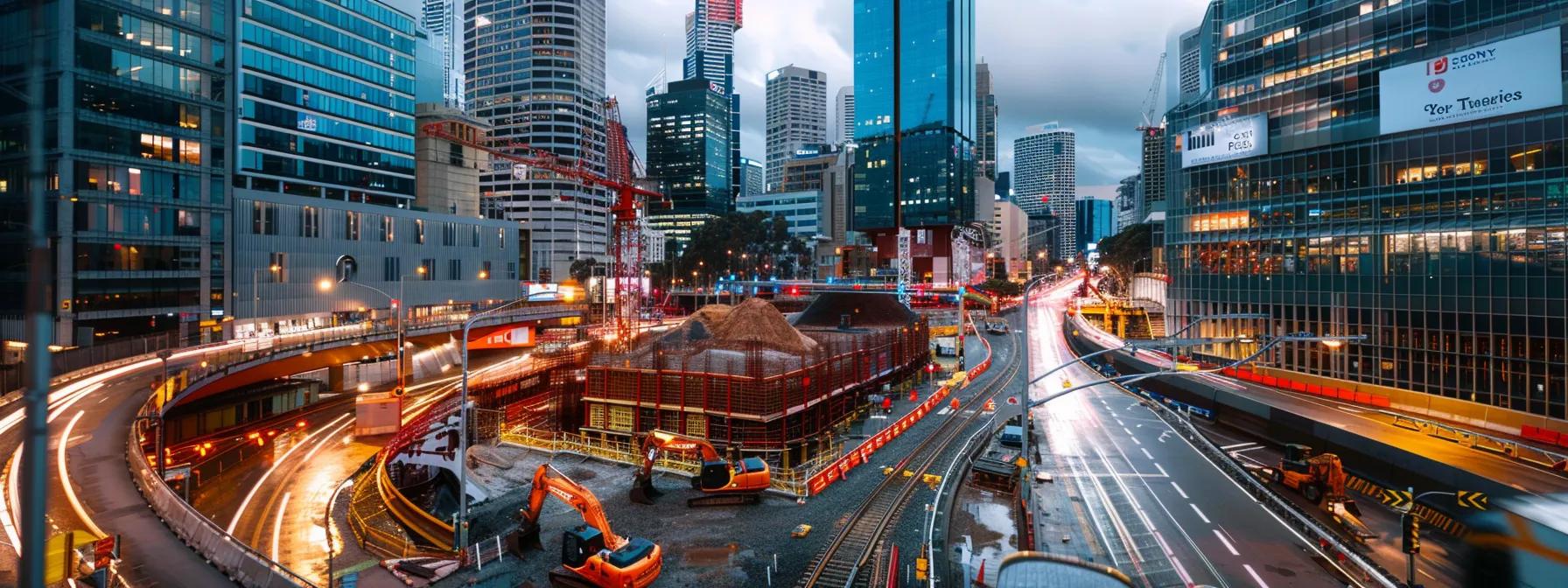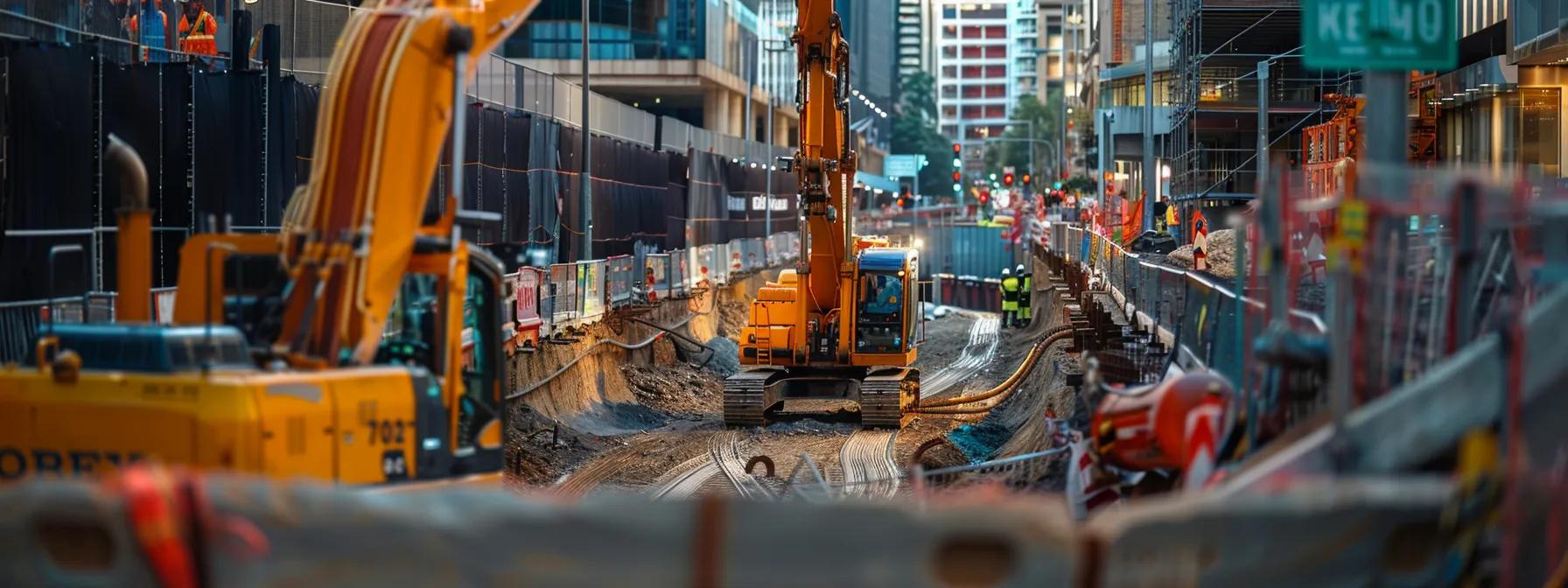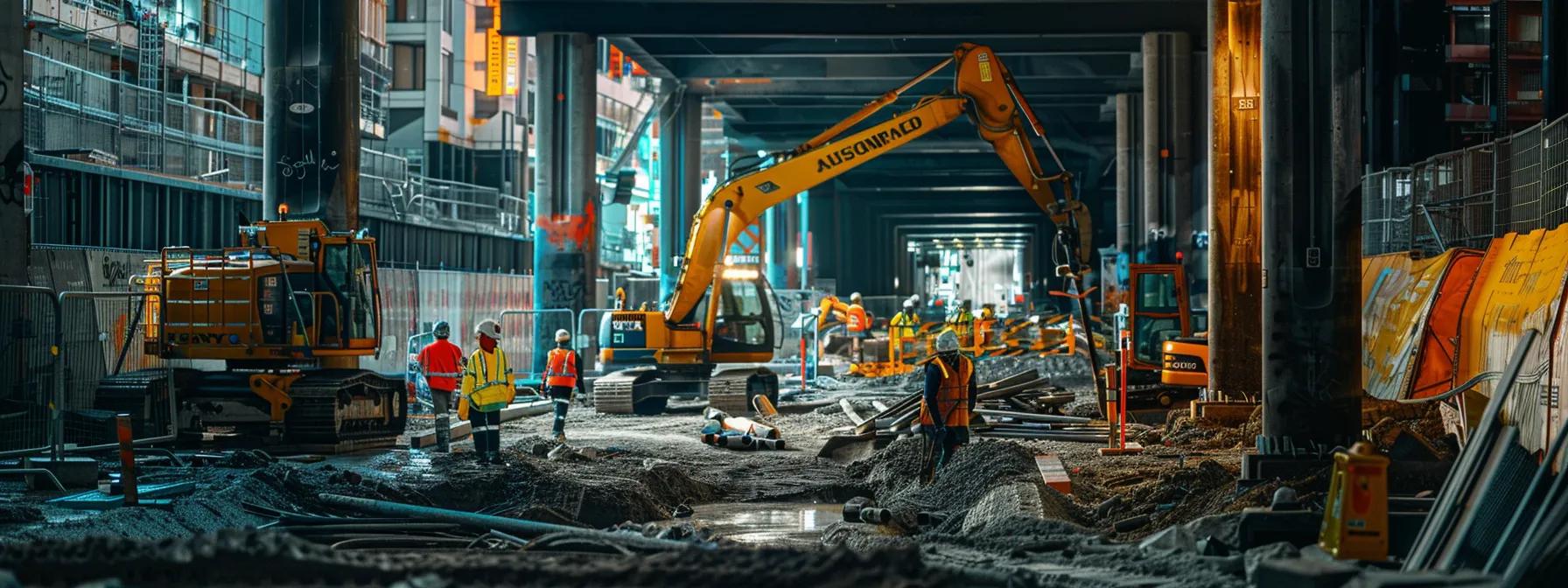
Efficient Under-Road Boring for Sydney's Infrastructure Upgrades
Clearwater Plumbing & Civil has embraced innovative trenchless technology to overcome the challenges of urban infrastructure projects in Sydney. Under road boring, a method that utilises directional drilling techniques to install pipes and cables underground without disruptive open-cut excavation, is rapidly becoming the preferred solution. This process not only preserves the road surface and nearby structures but also significantly reduces project downtime and environmental impact as Sydney continues to grow and face complex infrastructural and regulatory challenges. Understanding how under-road boring works, its benefits, and its applications is essential for both local government and private sector clients. This comprehensive guide examines the technology behind under-road boring, detailing its cost-effectiveness and safety advantages, and discusses how it meets local geological and regulatory requirements. It also explores real-life case studies from Sydney. The article is designed to equip decision-makers and project managers with the information necessary to select the most suitable method for their infrastructure projects.
Transitioning from traditional, disruptive open-cut methods to revolutionary trenchless techniques, under-road boring stands at the intersection of engineering efficiency and sustainable construction practices. The following sections provide clear, question-based answers that address the most pertinent aspects of its application in Sydney.
What Is Under Road Boring and How Does It Work in Sydney?
Under road boring is an advanced trenchless technology used to install infrastructure—including water pipes, electrical cables, gas lines, and telecommunications—without large-scale excavation. The technique involves drilling a horizontal tunnel beneath the road with minimal disruption on the surface. Directional drilling machines, guided by advanced navigation systems, ensure precise installation even in complex urban conditions found in Sydney.
What Is Under Road Boring and Trenchless Technology?
Underground boring is part of a broader category known as trenchless technology. This approach uses hydraulic drilling and mechanical boring to create underground passages with little surface impact. By avoiding extensive open cuts, trenchless technology preserves existing structures and reduces waste, environmental damage, and traffic congestion. In Sydney—a busy metropolis—these benefits translate into shorter project times, lower labour costs, and minimal interference with daily urban activities.
How Is the Under Road Boring Process Carried Out Step-by-Step?
The under-road boring process in Sydney follows several controlled stages: 1. Planning and Surveying: Engineers perform geotechnical surveys and plan the boring route, identifying obstacles such as existing utilities and challenging geological conditions. 2. Preparation: Entry and exit shafts are set up in strategic locations to anchor the tunnelling process. 3. Directional Boring: A specialised drilling machine creates a horizontal pilot hole, following precise coordinates with the help of state-of-the-art navigation systems. 4. Reaming: The pilot hole is then widened through reaming operations that ensure a smooth and appropriately sized tunnel for the pipe or cable. 5. Pipe Installation: The chosen infrastructure component is pulled through the enlarged tunnel. 6. Restoration: Finally, the entry and exit sites are restored, returning them to their original condition with minimal disruption. This systematic process ensures efficiency, speed, and a reduced environmental footprint.
What Types of Infrastructure Can Be Installed Using Under-Road Boring?
Underground boring is highly adaptable. Common applications in Sydney include: – Water and Sewer Pipes: These essential systems benefit from minimal surface disruption, ensuring continued service during upgrades. – Electrical and Telecommunications Cables: Installing these utilities underground helps maintain uninterrupted service even during network expansion or repairs. – Gas and Liquid Pipelines: The method provides a safe technique for installing pipelines for fuel and industrial liquids. Its precision and reduced downtime make under-road boring ideal for urban renewal projects where maintaining traffic flow and road integrity is critical.
Leveraging Under-Road Boring for Efficient Sydney Infrastructure Work

Under-road boring offers advantages that make it preferable over traditional open-cut methods, particularly in a busy city like Sydney.
How Does Under Road Boring Reduce Traffic Disruption and Public Inconvenience?
Since the installation occurs underground, there is little need for extensive road closures or detours, which reduces traffic congestion and public inconvenience. Commuters, local businesses, and residents benefit from the uninterrupted flow of traffic, and economic losses due to longer travel times are minimised. Additionally, with fewer surface excavations, issues such as excessive noise and dust are greatly reduced, leading to enhanced overall public comfort.
Why Is Road Boring More Cost-Effective Than Open-Cut Methods?
Underground boring minimises labour, heavy machinery involvement, and site restoration costs typically associated with open-cut excavation. With shorter project timelines, construction expenses decrease significantly. Research indicates that this method can reduce overall project costs by around 30% when indirect costs, such as traffic management and business interruptions, are taken into account. For municipal and private projects, these savings make underground boring a financially attractive option.
What Environmental Advantages Does Under Road Boring Offer in Sydney?
One of the standout benefits of under-road boring is its minimal environmental impact. With reduced surface excavation, there is less disturbance to the ecosystem, decreased soil erosion, and lower waste generation. Furthermore, fewer resources are needed for restoring the road surface, which helps lower the carbon footprint. The reduced noise and dust also contribute to a safer, more sustainable work environment, aligning with Sydney’s commitment to sustainable development.
How Does Under-Road Boring Enhance Safety Compared to Traditional Methods?
Safety is markedly improved using under-road boring techniques. The absence of large open trenches reduces the risk of collapses and accidents during construction. Additionally, by working underground, the likelihood of inadvertently damaging existing utility lines is minimised. This controlled environment results in fewer traffic disruptions and provides a safer setting for both the construction crew and nearby residents.
How Does Under Road Boring Address Sydney’s Unique Geological and Regulatory Challenges?
Sydney’s varied geology and strict regulatory framework require adaptable and precise construction methods. Under Road Boring rises to this challenge through advanced technology and a successful operational track record.
What Are the Key Sydney Regulations and Permits for Under Road Boring?
Projects involving significant underground work in Sydney must comply with stringent regulations to safeguard public safety and the environment. Local councils require permits, and projects must adhere to guidelines set by the NSW government and national standards. Regulations cover areas such as noise control, dust suppression, and environmental impact assessments. Close coordination with utility providers is also essential to prevent service interruptions. Clearwater Plumbing & Civil works closely with specialised consultants to ensure every project meets or exceeds the prescribed regulatory requirements.
How Do Sydney’s Geological Conditions Affect Underground Road Boring Projects?
Sydney’s geology—ranging from soft, sandy soils to hard rock formations—significantly influences drilling techniques. Underground road boring technology is designed to adapt to these varied conditions. In softer soils, the process can be faster and require less force, while in more challenging, rocky terrains, more robust drilling techniques are employed. Comprehensive geological surveys inform the selection of drilling methods, ensuring a secure installation and long-lasting infrastructure.
How Does Sydney Infrastructure Solutions Ensure Regulatory and Environmental Compliance?
Infrastructure providers in Sydney, including Clearwater Plumbing & Civil, take a comprehensive approach to compliance. This involves detailed pre-project assessments, continuous monitoring during the drilling process, and thorough post-project audits. Advanced monitoring equipment tracks environmental parameters such as noise, vibration, and dust levels to ensure they remain within acceptable limits. Regular consultations with regulatory bodies ensure that all aspects of the project conform to governmental permits and environmental policies, enhancing both safety and reliability.
What Are the Common Applications of Under-Road Boring in Sydney Infrastructure Work?

Underground boring is employed in a wide range of infrastructural installations across Sydney. Its flexibility suits projects in residential, commercial, and municipal sectors.
How Is the Under Road Boring Used for Water Pipe Installation in Sydney?
This method is particularly effective for installing water pipes without disrupting urban surfaces. In densely populated areas, maintaining a continuous water supply while avoiding major excavation is essential. Directional drilling allows pipelines to be installed under roads, sidewalks, and landscaped areas with minimal disturbance, reducing the risk of water main breaks and ensuring uninterrupted service.
What Are the Benefits of Under-Road Boring for Electrical Cable Installation?
Electrical cable installation benefits from the increased safety and efficiency of under-road boring. The trenchless method eliminates the hazards associated with open excavations and minimises disruption to traffic and nearby services. The precision of directional drilling enhances the accuracy of cable placement, reducing future maintenance issues and ensuring a speedy restoration of services after any upgrades or repairs.
How Does Under-Road Boring Support Gas Line and Telecommunications Projects?
Both gas line installations and telecommunications projects gain from the efficiency and safety of under-road boring. The method ensures that gas pipelines are securely installed, reducing the risk of leaks and enhancing overall safety. For telecommunications, the ability to rapidly deploy fibre-optic cables without major surface disruptions means lower costs and minimal impact on the surrounding infrastructure. These factors make under-road boring a preferred choice for modern urban upgrades requiring minimal downtime.
How Does Under-Road Boring Compare to Traditional Open-Cut Methods?
When compared with traditional open-cut excavation, under-road boring shows clear advantages in cost, time, environmental impact, and public safety.
What Are the Advantages of Trenchless Technology Over Open-Cut Excavation?
Trenchless technology, including under-road boring, offers several significant benefits: – Minimal Surface Disruption: Urban infrastructure, such as roads and landscapes, remain largely undisturbed, reducing traffic congestion. – Reduced Project Duration: Faster completion times mean projects are finished quickly, which improves return on investment. – Lower Overall Costs: Reduced labour, shorter project durations, and minimised restoration efforts lead to substantial savings. – Environmental Benefits: With less waste material produced and a lower carbon footprint, the ecological impact is significantly reduced. Together, these factors not only make trenchless methods efficient but also align them with sustainable construction practices.
How Do Cost, Time, and Environmental Impact Differ Between Methods?
Underground boring can deliver savings in several dimensions: – Cost: Projects can see reductions of 20–30% in costs due to lower labour and restoration expenses. – Time: Completion is typically 30–50% faster than conventional open-cut projects. – Environmental Impact: Fewer excavated materials mean reduced disposal costs and less environmental disturbance. These benefits play a crucial role in project planning and budgeting.
When Is Open-Cut Still the Preferred Method?
There are cases where open-cut excavation remains necessary. When projects demand large-scale physical modifications or complete visual access to an area, open-cut may be more appropriate. Similarly, if ground conditions are exceptionally shallow or challenging, traditional methods might offer better access. However, such exceptions are becoming rarer as trenchless technology continues to advance.
What Are Real Sydney Case Studies Demonstrating the Success of Under Road Boring?

Case studies from Sydney demonstrate the practical benefits of under-road boring. Real-world examples show significant reductions in cost, project duration, and environmental impacts, while still ensuring high levels of safety and operational efficiency.
Which Projects Show Significant Cost and Time Savings?
One project involved installing a major water main under a congested urban area, which reduced the project duration by nearly 40% while cutting costs by around 25%. In another case, electrical cables were installed beneath a busy highway with minimal surface disruption, preventing lengthy road closures and economic losses for local businesses. These examples clearly illustrate the time and cost efficiencies offered by under-road boring.
How Have Environmental Impacts Been Minimised in Sydney Projects?
In another Sydney case study, a gas pipeline installation using under-road boring reduced waste generation by over 50% compared to traditional methods. Reduced noise, dust, and improved community satisfaction were additional benefits noted during environmental assessments. These examples underline the method’s strong alignment with sustainable, eco-friendly construction practices.
What Feedback Have Clients Provided on Under Road Boring Services?
Clients consistently report high satisfaction with underground boring projects. Feedback highlights include minimal disruption to everyday activities, lower overall project expenditures, and a swift return to normal operations. Local councils and commercial entities appreciate the method’s ability to preserve public services and infrastructure reliability, confirming under road boring is a robust solution for modern urban challenges.
What Are the Most Frequently Asked Questions About Under Road Boring in Sydney?
The following FAQs address common queries on cost, duration, suitability, and safety in implementing underground boring projects.
What Is the Typical Cost of Under Road Boring in Sydney?
Costs vary with project complexity, length, and geology. However, typical projects can achieve 20–30% savings over traditional open-cut methods due to lower restoration and labour expenses. Contractors usually provide detailed quotes after conducting on-site assessments.
How Long Does an Under Road Boring Project Usually Take?
Project duration depends on the scope and site conditions. Generally, road boring can be completed 30–50% faster than open-cut methods. A medium-scale project might take approximately two to three weeks from planning and drilling to completion.
Is Under Road Boring Suitable for All Types of Infrastructure?
While very versatile, under-road boring is best suited for installations like continuous water pipes, telecommunications, gas lines, and electrical cables. For projects requiring extensive modifications or where ground conditions are highly unstable, alternative methods may be evaluated.
How Can I Get a Quote or Consultation for Under Road Boring Services in Sydney?
Interested clients can contact specialised service providers such as Clearwater Plumbing & Civil. Initial consultations typically involve a site assessment and detailed discussion of project requirements, after which a tailored quote is provided.
Frequently Asked Questions
Q: What makes under-road boring a preferable choice in urban environments compared to traditional excavation? A: Under road boring minimises surface disruption, reduces traffic interruptions and environmental impact, and generally incurs lower costs due to savings on labour and restoration. It is especially suited to busy urban settings where everyday functionality is critical.
Q: How does the directional drilling system ensure the accuracy of under-road boring? A: The process employs advanced navigation systems and continuous monitoring to guide the drill along a pre-planned path. This precision minimises risks and ensures that utilities are installed accurately even in challenging conditions.
Q: Can under-road boring be used for all sizes of infrastructure projects? A: While highly versatile and ideally suited for continuous installations such as pipes and cables, projects requiring large-scale modifications may still rely on traditional methods. Initial assessments help determine the most effective approach.
Q: Are there any significant safety concerns associated with under-road boring? A: Safety is significantly enhanced due to the lower risk of surface collapses and reduced interaction with heavy machinery, making the process much safer than traditional open-cut excavation.
Q: What environmental benefits does under-road boring offer, and why are they important for urban projects? A: Under-road boring produces less waste, lowers carbon emissions, and minimises noise and dust. These benefits are vital for sustainable urban development, reducing both environmental and community impacts.
Q: How do clients typically measure the success of an under-road boring project in Sydney? A: Success is measured by factors including cost savings, reduced completion times, minimal traffic and environmental disruption, and the durability of the installed infrastructure. Positive client feedback and post-project evaluations also serve as important indicators.
Final Thoughts
Under-road boring in Sydney has proven to be a superior technique for modern infrastructure work, combining efficiency, cost-effectiveness, and sustainability. By reducing traffic disruption and environmental impact while ensuring rapid and safe installation, this method provides a practical solution for densely populated urban areas. Its adaptability to Sydney’s unique geological and regulatory landscape makes it an excellent choice for various projects. Real case studies and consistent client satisfaction underline that under-road boring is not only a smarter option but also a forward-looking solution for the future of infrastructure development in Sydney.

